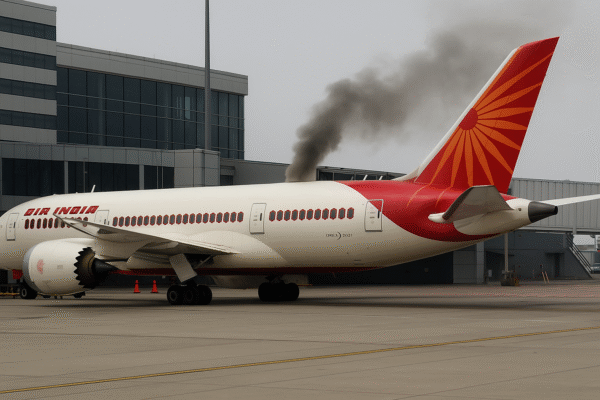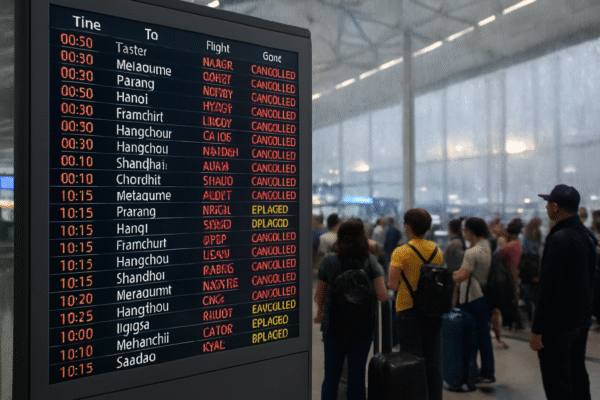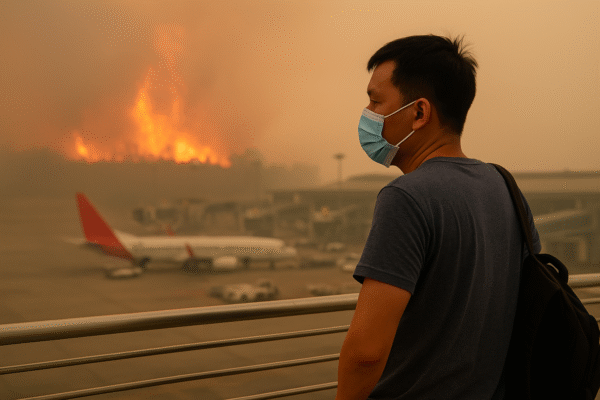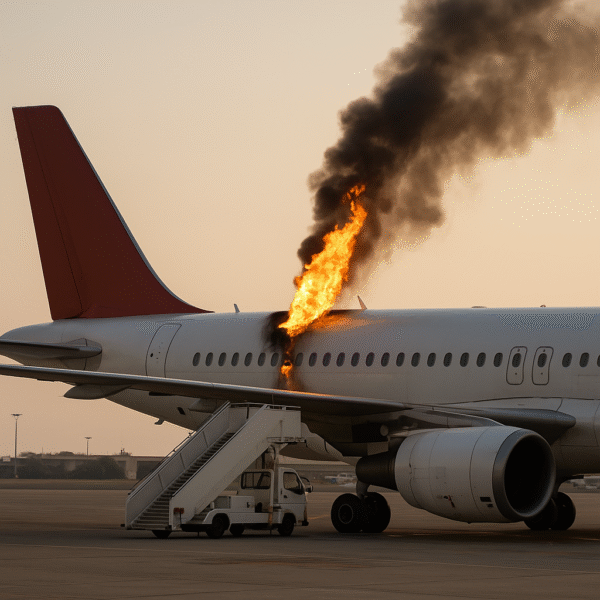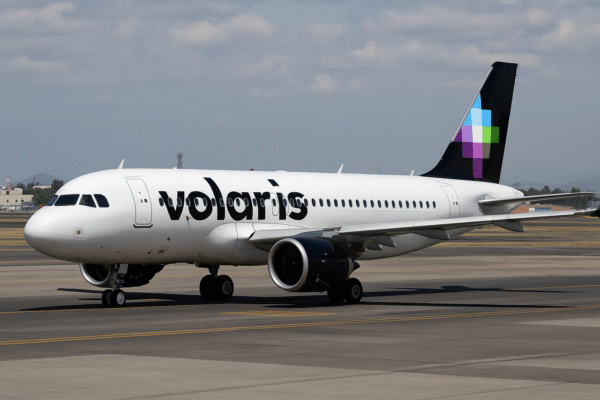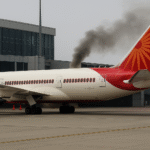A potentially catastrophic aviation incident unfolded on the tarmac of Delhi’s Indira Gandhi International Airport on Tuesday, when an Air India Airbus A321 aircraft arriving from Hong Kong experienced an auxiliary power unit (APU) fire shortly after passenger disembarkation. Though no injuries were reported, the event has raised critical questions about the airline’s aircraft maintenance protocols and overall aviation safety in India.
Aircraft Fire Raises Alarms, Sparks Immediate Investigation
The incident occurred after flight AI315 landed safely from Hong Kong. The Airbus A321, registered VT-TVG, was stationary at the gate when flames erupted from the tail section where the APU is located. Fortunately, the fire broke out only after all passengers and crew had exited the aircraft, narrowly averting what could have been a tragic scenario.
Air India promptly informed India’s Directorate General of Civil Aviation (DGCA), which launched a formal investigation into the cause. Preliminary assessments suggest the fire could be attributed to a mechanical fault or maintenance oversight.
What Is an APU and Why It Matters
The auxiliary power unit (APU) is a critical component on modern aircraft. It powers essential systems like lighting, air conditioning, and avionics when engines are shut off—typically during boarding, deplaning, and while parked at the gate. While not involved in flight propulsion, the APU is vital for operational safety and passenger comfort.
In this case, the malfunction occurred post-landing while the aircraft was idle on the apron. The APU fire did not affect the fuselage or other major systems, but the risk it posed—particularly had it occurred earlier or while passengers were onboard—cannot be overstated.
Air India’s Response and Maintenance Questions
Air India issued a brief statement confirming that no one was hurt and that emergency protocols were followed immediately. However, the incident underscores growing concerns over aircraft maintenance standards, especially on aging aircraft models that may face cumulative wear and tear.
According to the DGCA’s standard operating procedures, airline operators are required to conduct routine and detailed checks on aircraft, including APU systems, based on flight cycles and manufacturer recommendations. Any deviation from these schedules or lapses in inspection protocols could potentially lead to mechanical failures such as what occurred on the Air India A321.
Similar Global Incidents Highlight Broader Issue
This incident is not isolated. In June 2016, a similar APU-related fire occurred on an Airbus A330 at London Heathrow during disembarkation. A faulty oil seal had allowed oil to leak into the aircraft’s bleed air system, producing smoke and requiring evacuation.
Likewise, in July 2013, passengers aboard an Air France Boeing 777 at Paris Charles de Gaulle Airport experienced smoke in the cabin caused by an APU malfunction. While no injuries were reported, both events triggered wide-ranging reviews of maintenance procedures and highlighted the importance of routine APU checks.
These cases collectively stress the global relevance of this safety issue and reinforce why regulatory bodies like the DGCA, EASA (European Union Aviation Safety Agency), and FAA (Federal Aviation Administration) mandate stringent maintenance standards.
The Importance of Proactive APU Monitoring
While APUs are generally considered reliable, they are complex systems involving high-temperature and high-pressure mechanisms. Even minor faults—such as a cracked seal, oil leak, or software glitch—can escalate into a full-blown hazard.
Experts now recommend airlines adopt predictive maintenance technologies. These include onboard diagnostics and data analytics tools capable of forecasting potential component failures before they occur. Predictive maintenance is especially valuable in tracking wear-and-tear patterns on components like APUs, enabling more proactive interventions.
Regulatory Oversight and Airline Accountability
India’s DGCA is already conducting a detailed inquiry into the Air India incident, examining maintenance logs, recent repair records, and compliance with Airbus manufacturer guidelines. The regulator may impose fines or corrective actions depending on the findings.
Moreover, this incident could prompt a nationwide audit of all APU units across the fleets of Indian carriers, particularly on aircraft over a certain age threshold. Enhanced technical inspections, mandatory re-certifications, or fleet upgrades could follow.
According to DGCA reports from 2024, India’s civil aviation sector is experiencing increased scrutiny amid rapid post-pandemic growth. The country has seen a 23% year-over-year increase in passenger traffic, and Air India—following its acquisition by Tata Group—is undertaking a massive fleet modernization and service overhaul. However, this APU fire underscores that even amid modernization efforts, safety must remain paramount.
What’s Next for Air India?
As Air India continues its transformation journey, maintaining the highest standards of operational integrity is crucial. While this A321 fire did not result in casualties, it offers a sobering reminder of the risks associated with aircraft systems that may be overlooked.
The airline has reassured the public that it is cooperating fully with authorities and has grounded the affected aircraft for comprehensive technical evaluation. Results of the DGCA’s probe are expected in the coming weeks.
Conclusion: A Wake-Up Call for Indian Aviation
The APU fire on Air India’s A321 at Delhi Airport is a serious reminder of how critical non-propulsion systems are to aircraft safety. Though passengers escaped harm this time, the event highlights an urgent need for tighter maintenance oversight, better technology adoption, and stronger regulatory enforcement to prevent similar near-misses in the future.
As India positions itself as a global aviation hub, incidents like this emphasize that safety cannot take a back seat to growth. Airlines must ensure every aircraft system—from engines to APUs—is in top condition before every flight.
For more travel news like this, keep reading Global Travel Wire




